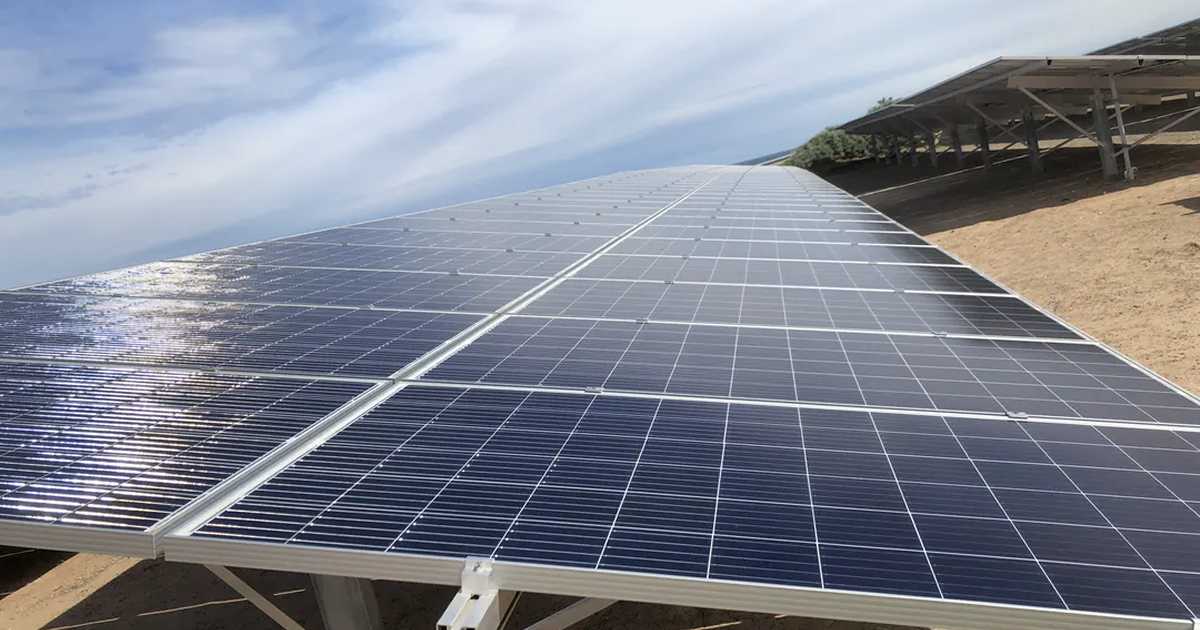
Image: SA Water
How much on-site renewables-based electricity is generated by Australia’s water and wastewater utilities? Researchers at the University of Queensland sought to find out.
According to researchers from UQ’s School of Chemical Engineering, the Australian water industry generated 279 GWh of its electricity from on-site renewable sources in 2018. That was around 18% of its electricity requirements for the year, which would work out to 1,550 gigawatt hours1.
Here’s the breakdown of renewables-based electricity production in 2018:
- Anaerobic digestion of wastewater and sewage sludge – 67% (187 GWh)
- Hydropower – 30% (84 GWh)
- Biogas from co-digestion and waste-to-energy through anaerobic digestion of organic feedstock – 2% (5.5 GWh)
- Solar panels – 1% (2.2 GWh)
While the total for solar energy isn’t particularly impressive…
Solar Power Uptake Accelerates
The UQ study total only covers renewables-based electricity generated in 2018 – and a year is a very long time when it comes to solar power uptake. Last year, various utilities continued to embrace solar energy and plan for additional capacity, including Gippsland Water (VIC) and North East Water (VIC).
SA Water’s solar rollout is worth a special mention as it involves around 150MW of solar PV capacity and 34MWh of battery storage that will be installed this year. SA Water’s $300 million investment will result in around 242 gigawatt hours of electricity generated by solar panels annually. Going by UQ’s figure, that’s only around 15% less than the total output of all on-site renewables for all water utilities across the country in 2018. Additionally, SA Water has already installed other solar capacity since 2018.
The UQ study abstract also notes:
“Solar photovoltaic did not contribute significantly to the electricity generation of the industry, and space requirements to install large systems might limit its future development to a more significant level of electricity generation.”
That doesn’t appear to be the case and even if it were, power purchase agreements (PPAs) with off-site solar facilities are an option for utilities. Last year thirteen of Victoria’s water corporations banded together to buy electricity from Kiamal Solar Farm in the north-west of the state, which will enable each participant to purchase 20 to 50 per cent of their total electricity needs from the clean power station.
Footnotes
- An SA Water estimate for total electricity use by the water industry nationally is much, much higher – 3,000 gigawatt-hours, but I haven’t investigated either figures further. ↩

 RSS - Posts
RSS - Posts



Good on SAWater, two slight problems with this: –
1. Pity they can’t seem to reduce leaks/bursts – i.e. improve or replace infrastructure
2. Did they really need to take out the trees at Happy Valley Reservoir to do so? Surely some land without trees within their portfolio could have been used. Also, the kangaroo’s that inhabit the surroundings would have retained more natural shade.
Even more trees are being cut down on the southern side of the Reservoir today. Why so many trees being removed?